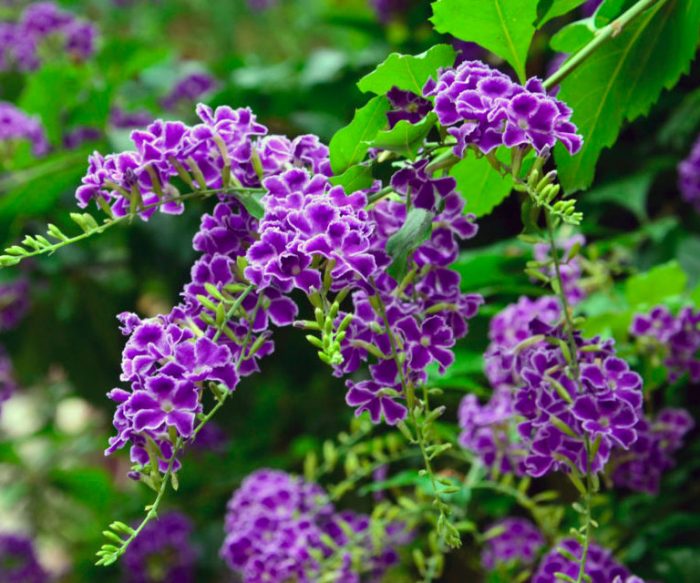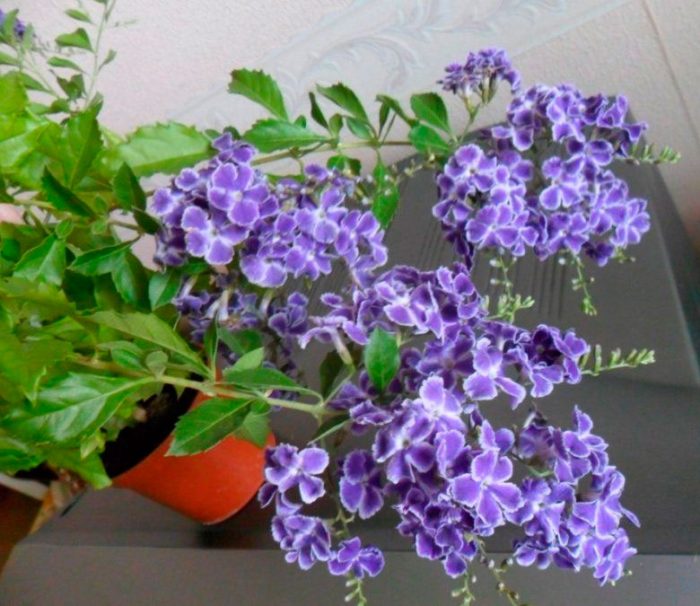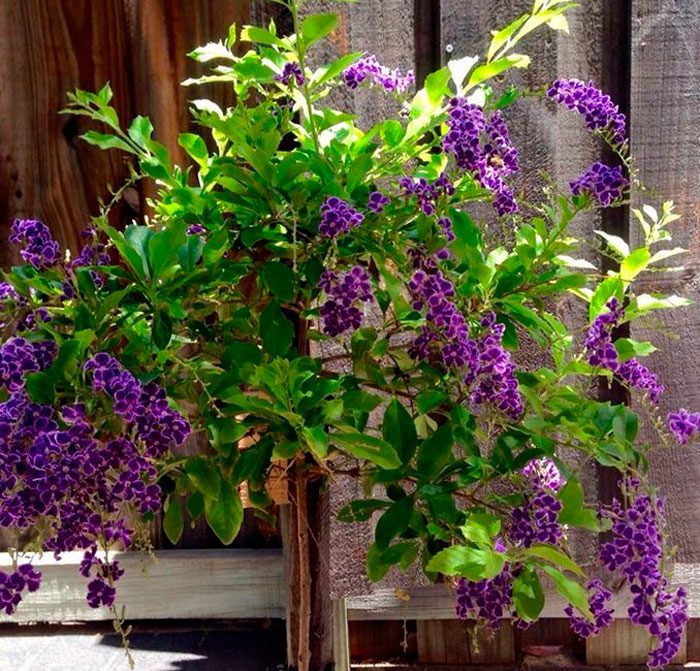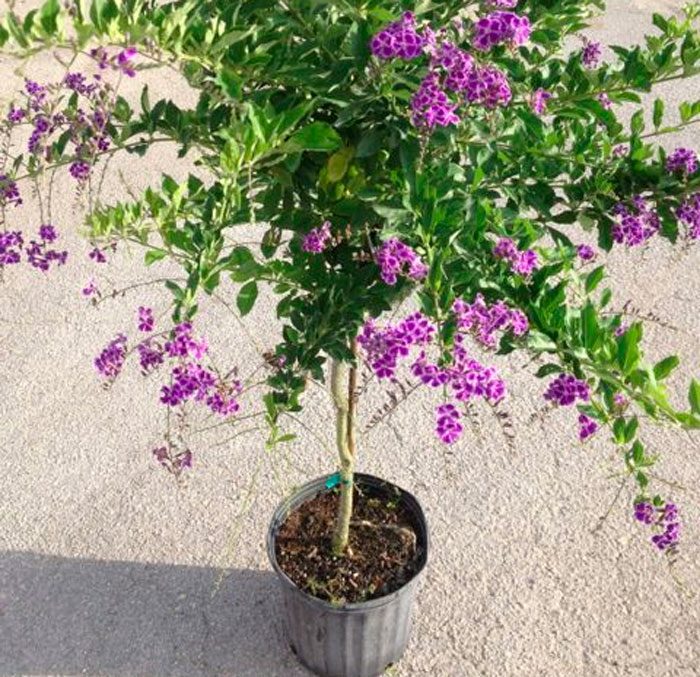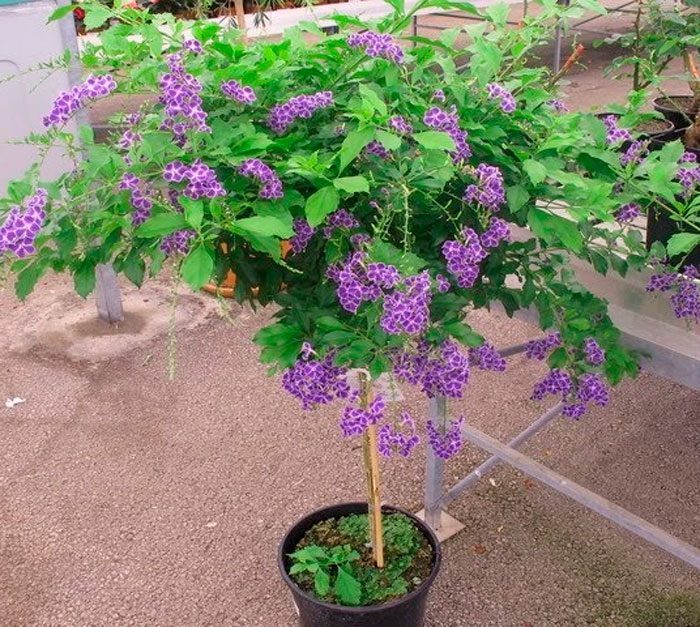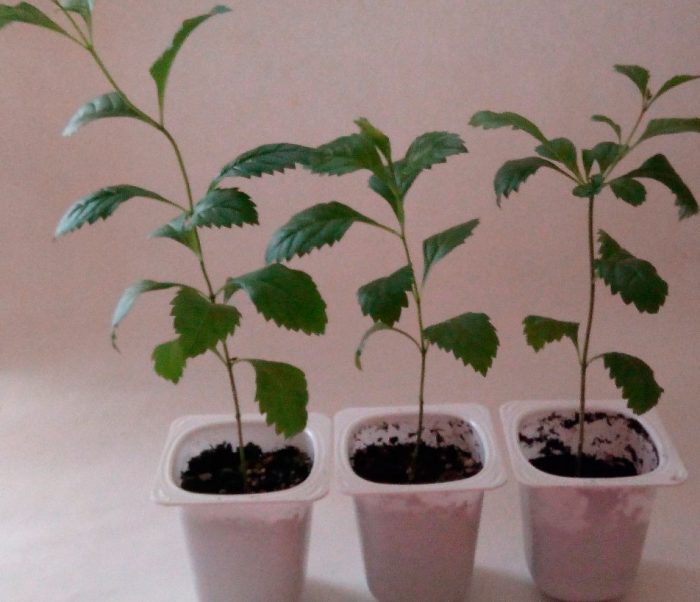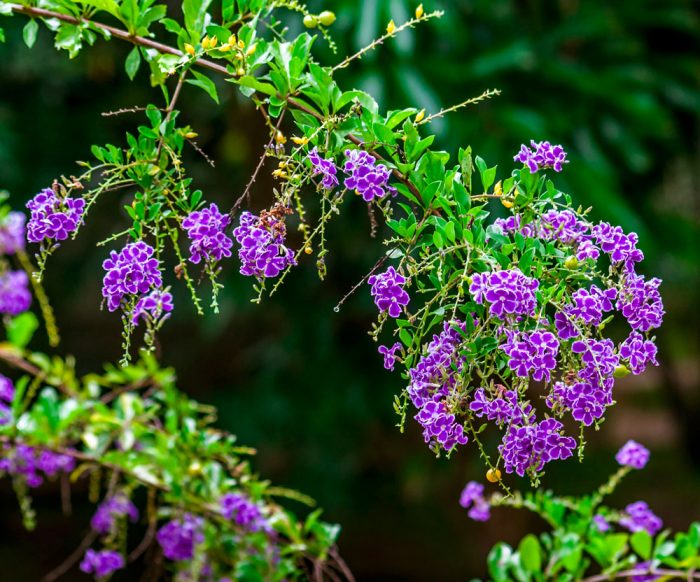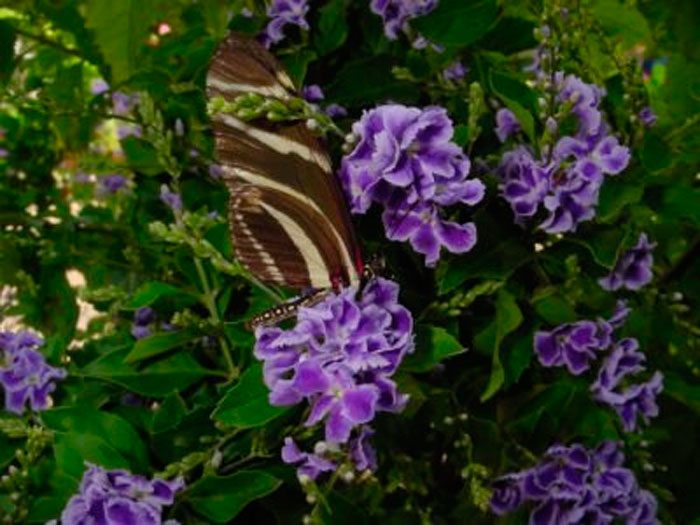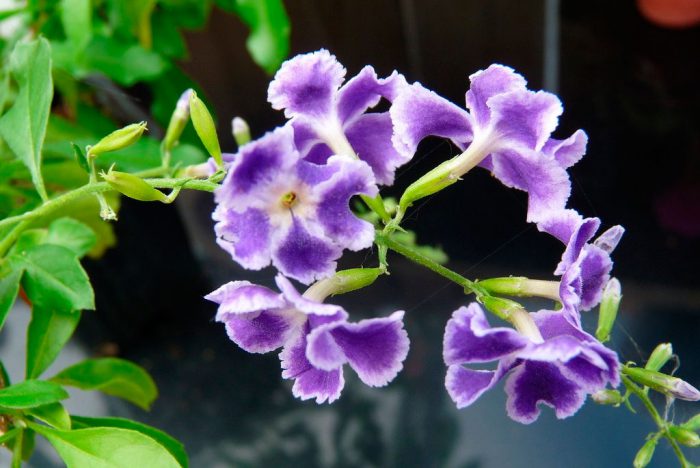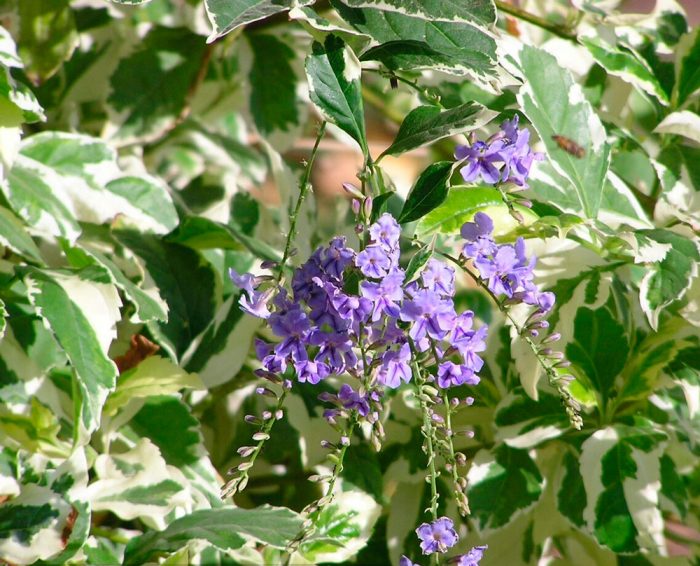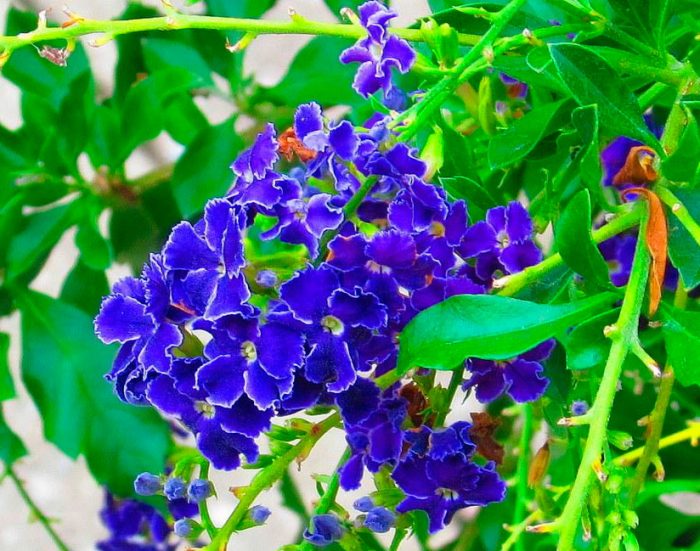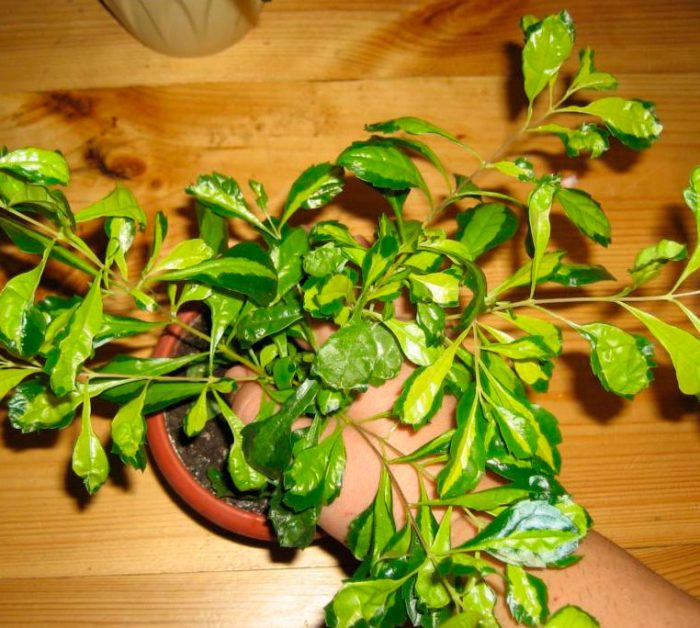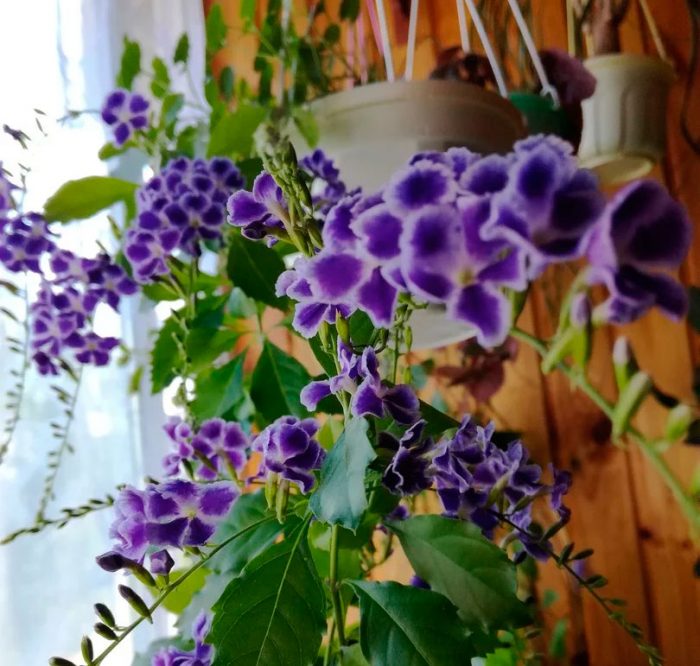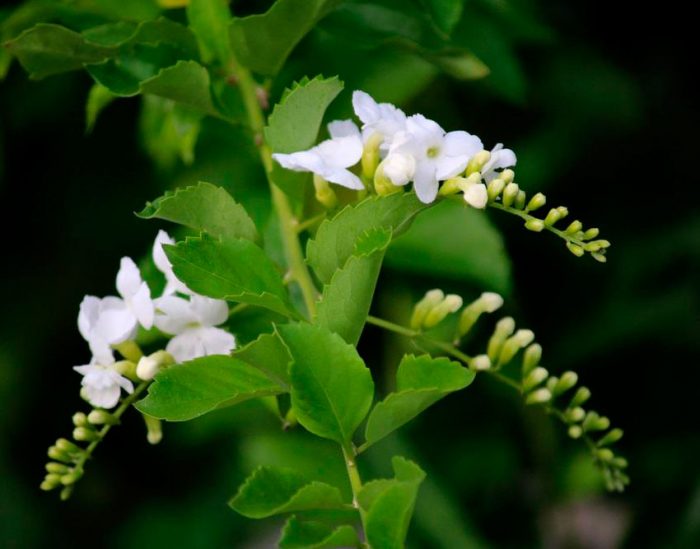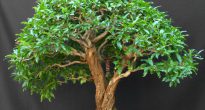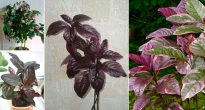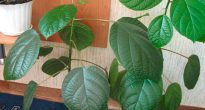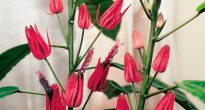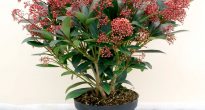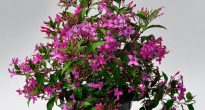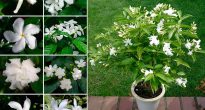Despite the fact that the name of the durant is not distinguished by its euphoniousness, it refers to a very effective shrub. Its beautiful flowers can have a variety of colors (depending on the plant variety). This shrub is unpretentious and has an unusual appearance, however, despite this, it is not very popular with flower growers.
Content
Features of duranta
Not so long ago, such an exotic plant as duranta was widely cultivated in indoor conditions. Today, some gardeners are also engaged in its cultivation, but still the plant is no longer popular. Duranta is a subspecies of flowering shrubs that are perennials. It is considered part of the Vervain family. This subspecies includes about 22 different species. This exotic plant was named duranta in honor of the Italian scientist K. Durante. This shrub also has popular names, for example, "pigeon berry" or "indoor birch". In some countries, Durant is also called "heavenly flower" or "farewell tear".
The most important advantage of this exotic, for which flower growers appreciate it, is its spectacular flowering. Its beautiful flowers can be colored lilac, dark purple, blue or white. There are also varieties in which the center of the purple flower is white, and along the edge of the petals there is a border of the same shade. Flowers are part of long racemose inflorescences. At the end of flowering, deep orange berry-like fruits are formed on the bush. The foliage of such a plant also looks quite impressive. As a rule, it is colored dark green, but it can also be variegated. There are notches on the edge of the sheet plates. This shrub is distinguished by strong branching, and its branches are spreading.
Before decorating your home with a durant, keep in mind that it contains a very strong poison! It is grown at home as a shrub with spreading stems. From a creeping species, durants often form a miniature bonsai.Under natural conditions, this plant can be found in South America. It is cultivated both indoors and outdoors (in the garden).
Durant care at home
Duranta is an unpretentious plant that is undemanding to care and growing conditions. That is why any florist can grow this shrub in his apartment. First of all, it should be borne in mind that in nature such a shrub is found in the tropics, so it needs warmth, a lot of moisture and light. If you provide the plant with timely watering, pruning and feeding, then it will always look very impressive, especially during the flowering period, which can last a very long time (almost the whole year).
Temperature regime
Although duranta is a tropical plant, it thrives at normal room temperature. In the spring-summer period, it grows best at a temperature of about 20 degrees, but in winter it is better to remove it to a cooler place (15-17 degrees). However, make sure that during the winter the temperature in the room where the bush is located does not drop below 12 degrees. With the onset of spring, when it becomes quite warm outside, the durant is transferred to the balcony or to the garden.
Lighting
For lush flowering, the shrub needs a lot of bright light. If the bush is in shade, then it may not bloom at all. With too little lighting, the foliage becomes faded, and in some species it even begins to fly around. On hot days, the bush needs protection from direct sunlight.
Watering
This perennial is one of the moisture-loving plants. However, the frequency and abundance of moisture in the potted substrate is directly related to the season. In the spring-autumn period, watering is carried out approximately 1 time in four days, and in winter, only one moistening of the soil mixture in 7 days will be enough. Before you start watering, you need to make sure that the plant needs it. To do this, check the substrate: if it is half dry in depth, then be sure to moisten it.
Air humidity
In order for this exotic to grow and develop normally, it needs high humidity. You can increase the level of humidity with a household humidifier, but if it is not there, then systematically spray the bush with a spray bottle. In winter, too high a level of humidity can lead to the development of various diseases, therefore, the air in the room should be drier during the winter months. Even in winter, such a plant should not be placed near working heating appliances, as this can greatly harm the plant, and also lead to overdrying of the substrate in the pot.
Suitable soil mixture
In order for the bush to grow and develop within normal limits, for planting it, you should choose a neutral, loose soil mixture saturated with nutrients and good air permeability. For example, you can plant a durant in a mixture of neutral soil and coarse sand. In order to make an earthen mixture with your own hands, combine the leafy and sod soil with sand (1: 1: 1). Pour not very much peat, perlite and vermiculite into the finished substrate. And do not forget to make a good drainage layer at the bottom of the container, for the creation of which expanded clay or brick chips are perfect. The thickness of the drainage layer should be высоты of the height of the pot.
Durant transplant
While the shrub is young, it needs an annual transplant. However, an adult bush is subjected to this procedure only if it is necessary, for example, the root system is very crowded in a flower pot.
During transplantation, you can thin out the root system a little if necessary. To do this, remove some of the dense "felt" that has formed around the edge of the earthy coma. In the event that the bush is very large, then it will be difficult to transplant it.Therefore, instead of transplanting, experts advise replacing the top layer of the soil mixture in the pot with a new substrate every year. However, if there is such an opportunity, it would still be better to transplant the bush.
Fertilizer
As a rule, duranta is fed during the warm season. During the winter months, feeding is carried out only when necessary. For example, if the bush hibernates in the warmth, then they continue to feed it in the same way as in the summer. However, if the plant was transferred to a cool place for wintering, then fertilizer is not applied to the substrate.
In order to understand what kind of fertilizer should be used for feeding, you should pay attention to the type of durant. For example, variegated duranta is fed with fertilizer for decorative deciduous plants, which contains a large amount of nitrogen. This microelement contributes to the fact that the foliage of the bush grows lush and spectacular. If the shrub is grown as a flowering crop, then it should be fed with fertilizers for flowering plants. And also remember that it is necessary to add organic matter to the substrate from time to time.
Pruning
In order for the bush to be neat and effective, it requires systematic formative pruning. It can be formed as a small tree or grown as a shrub. Be sure to cut out any extended, injured, and old branches. You can cut the bush only after flowering ends.
Bloom
As a rule, duranta blooms in spring and summer, while flowering duration is 5-6 months. The plant blooms with not very long interruptions, at this time there is an active growth of branches with inflorescences and a build-up of new growth. In the event that the bush is kept warm all the time, and at the same time it creates an optimal microclimate and provides a sufficient amount of light, then flowering will last all year round.
Wintering
In winter, this perennial shrub needs special care. First of all, it must be placed in a well-lit place so that it has enough light. When the daylight hours become too short, supplementary lighting will help to make it longer; phytolamps are perfect for this. Make sure that during the cold season the humidity in the room is not too high, and the temperature should also be reduced to 12-15 degrees. Moisten the bush only if necessary, while watering it more often than 1 time in 7 days is highly not recommended.
In the event that the shrub is grown in the garden, then it must be insulated for the winter. To do this, the surface of the near-trunk soil is covered with a thick layer of sawdust, and then the branches are bent to the soil surface, and then a plastic cover is put on the bush. In this case, no frost will harm the duranta, and it will definitely not freeze out.
Features of care after winter
When spring begins, in the room where the shrub is located, it is necessary to increase the humidity level to 70 percent. The frequency of watering is also increased up to 2 times in 7 days. But do not forget that at any time of the year, watering is carried out only when it is necessary (after the soil mixture has dried up to ½ part in depth). Even during the intensive growth of the plant, it is kept in a well-lit place, while monitoring the air temperature in the room, which should be about 20 degrees.
In the spring, a cover is removed from a bush grown in the garden, the surface of the trunk circle is carefully loosened, the branches are examined, and the plant is also fed, if necessary.
Reproduction methods
Cuttings
Indoor durant can be propagated using cuttings. In order to prepare them, it is necessary to cut off the semi-lignified apical shoots. For rooting, the segments are planted in a mixture of peat and sand, but before that, they are immersed for some time in a solution of an agent that stimulates the formation of roots.In order for rooting to be successful, you will need increased air humidity, and even lower heating of the box to 25 degrees. In order to create conditions suitable for rooting, it is recommended to place the cuttings in a mini-greenhouse, it will be much easier to maintain the required temperature and humidity there.
Seed propagation
In order to grow durant seedlings for planting in the garden, the seed (generative) method of reproduction is often used. Immediately before sowing, the seed is immersed in a warm solution of Epin or Zircon for 24 hours. When the allotted time is up, the seeds are sown in a box filled with a substrate, and they are buried in the soil mixture by 15 mm. Then the crops are harvested in a mini-greenhouse, which is transferred to a well-lit and warm (about 25 degrees) place. The first seedlings should appear after 1–2 months.
Diseases and pests
The durant plant is highly resistant to both pests and diseases. However, with improper care, such as excessively low air temperatures or too much watering, rot can appear on the roots. And if the air in the room is excessively dry, pests can settle on the bush.
Even if you care for the plant correctly, you still need to know what pests can settle on it:
- Aphid... If the color of the foliage has faded, and it itself twists and dries, this means that aphids have settled on the bush. Carefully inspect the seamy surface of the sheet plates, this is where this pest prefers to hide. To get rid of it, treat the plant with an insecticidal solution, for example: Fitoverma or Derris.
- Shield... Such an insect actively sucks the plant sap from the foliage, because of which it dies. If brownish small specks and sticky liquid appear on the bush, it is most likely that scale insects have settled on it. To get rid of the pest, the bush is treated with Actellik's solution, or its leaves are thoroughly washed with a soap solution.
- Whitefly... Because of this insect, the leaf plates turn yellow and die off. It settles on the underside of foliage and sucks sap out of it. To get rid of it, it will take several treatments of the bush with a solution of the Admiral or Kinmix.
- Spider mite... Withering and flying foliage is a sure sign of the presence of a spider mite. If there are a lot of pests, then the finest cobwebs can be found on the shoots and leaves. To get rid of them, give the bush a shower and spray it with Decis or a preparation of a similar action.
Also, sometimes rot can appear on the root system, which causes foliage to fly around. Due to rot, the bush may die. At the first signs of root decay, the bush must be urgently transplanted. Remove it from the pot and remove all the substrate from the roots, and then cut out all problem areas and treat the root system with an antiseptic. Then plant the duranta in a new container and fresh soil mixture.
Why duranta does not bloom
For lush and long flowering duranta, it must be in a cool place in winter. Bush pruning is carried out only in the autumn at the end of flowering. It is also very important to choose a well-lit place for it. When transplanting, the new pot should be only slightly larger than the old one, otherwise the roots will be too spacious and the bush may not bloom at all. If you follow all these simple rules, then the shrub will bloom regularly, luxuriantly and for a long time.
Duranta sheds leaves
In autumn or winter, duranta can shed some of the leaves, which is considered a completely natural process. But if the foliage begins to fly around during the active growth of the plant or flowering, then this may be due to decay of the roots or the presence of pests. By identifying the cause and eliminating it, you will save the plant, and its foliage will soon become lush and spectacular again.
Types and varieties of duranta
Duranta little geisha
In this species, the flowers are painted in a deep purple hue, their middle is white, and the petals are bordered by a wavy strip of the same color. During flowering, long and lush, racemose inflorescences form.
Duranta plumier
The height of such a beautiful shrub is about 250 centimeters. Its oblong-oval leaf plates are outwardly similar to birch foliage, they have a pointed top. This species blooms very luxuriantly and effectively with purple or blue flowers.
Duranta variegated
This hybrid plant is adorned with creamy-white-green foliage. Its inflorescences are painted in sky blue.
Blue durant
The dark green leaf plates have a pointed tip. Long racemose inflorescences are made up of showy bluish flowers.
Duranta green and gold
This plant is also called "tricolor". Its spectacular variegated foliage has an unusual color: its edge is green, and the central part is yellow. The blue flowers have a very pleasant, delicate scent. They are part of the racemose inflorescences, which are located at the tops of the stems.
Duranta white
The height of such a shrub is about one and a half meters. Its tetrahedral stems are adorned with small, leathery, oblong-ovate leaf plates with pointed tops. Spectacular snow-white flowers have a very pleasant sweetish vanilla smell.
Duranta sweet memoris
Ovate leaf plates are colored dark green. On the petals of purple flowers there is a spectacular whitish edging. The flowers are part of the racemose inflorescences hanging down, they have a very pleasant smell.
Duranta erecta alba
This type is most popular with flower growers. The bush is adorned with large, smooth diamond-shaped foliage with a jagged edge. In height, it reaches no more than one and a half meters. The flowers, which have a very pleasant smell, are collected in lush racemose inflorescences, they can be painted in white, purple or blue.

